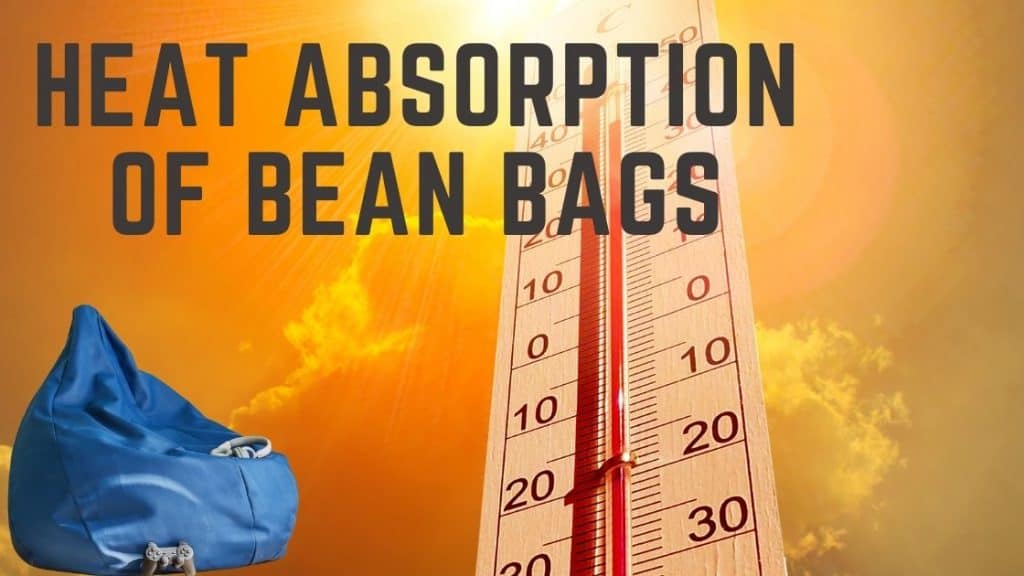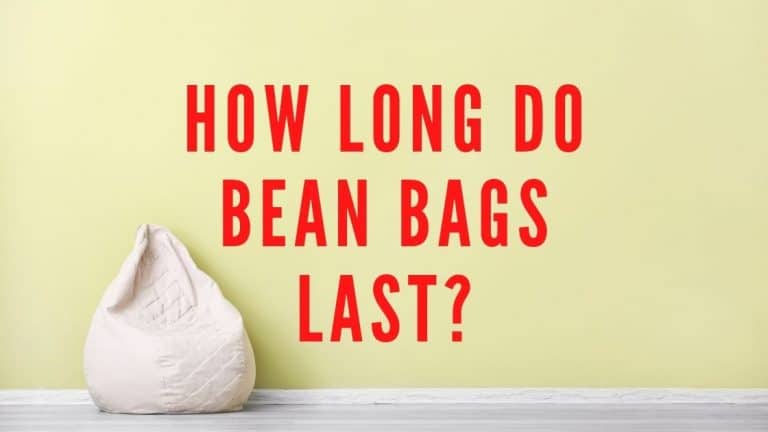Do Bean Bags Absorb Heat?
The bean bag is a cozy, comfy seat that everyone loves to sit in. However, rather than other furniture, its structure and technology are a bit different. Also, it is produced with different types of fabrics and fillers.
Therefore, most people have doubts about its behavior. So, some people ask Do bean bags produce heat? Or Do the bean bags absorb heat?
Bean bags absorb heat. Not only bean bags, but every material in this world also absorb heat. This theory applies to them, whether living or nonliving, natural or synthetic. But the bean bag’s heat absorption level depends on several factors such as its fabric type and filler type.
Moreover, bean bags do not produce heat without external influences. Usually, it absorbs heat from its environment and the human body.
First, let’s look at the factors that cause heat bean bags!

Table of Contents
Factors That Cause Heat of the Bean Bags
The Heat of the Sun or Infrared Radiation
Sun is the primary natural source that transfers heat. It emits radiation like ultraviolet (UV), Infrared (IR), and visible light.
However, the Infrared is the primary radiation responsible for heat generation. So, if you place a bean bag in a sunny place, you can experience it.
Do you ever feel hot when you sit on an outdoor bean bag? That’s because the outdoor bean bag absorbs and keeps some heat.
Anthropogenic Activities
Besides these natural sources, some anthropogenic activities and equipment can generate heat.
For example, if you place your bean bag near strove, it will heat after a particular time. Or else, if you place your bean bag near the equipment that emits heat, the bean bag will get hot.
How does this happen?
Body Temperature
The above reasons and your body heat also cause to heat your bean bag.
When you sit on the bean bag just after someone leaves it, don’t you feel warm? If the bean bag is not absorbed heat, how is it happen?
This is the most common example proving that Bean bags absorb heat.
Generally, human body heat is around 98.6 degrees Fahrenheit. But the regular bean bag is at room temperature. Scientifically, the heat is transferred from higher temperature to lower temperature. When you sit there, your body heat will move, and the bean bag will absorb it. That’s how this happens!
Factor Affect the Heat Absorption of Bean Bags
However, as I mentioned above, the bean bag’s heat absorption capacity depends on several fractures. They are;
- Bean bag fabric color
- Bean bag fabric texture
- Light-reflecting level
- Bean bag filler type
- Filler structure
Let’s look at how these factors relate to heat absorption.

Bean Bag Fabric Color
The infrared radiations are the main factor that causes warm-up surfaces. Generally, these radiations have long wavelengths and cannot be visible to the naked eyes.
However, the scientist did some research on fabric heat absorption capacity. So, they identify the colors of the fabric that can absorb more heat.
Their findings show the dark colors, mainly black, have good heat absorption ability. Rather than black, other dark colors such as brown, red, dark blue color fabrics can absorb more heat.
So, if your bean bag cover is made of these colors, it can absorb heat and give a warmer feel.
But if your bean bag is made of fabrics with light colors such as yellow, white, or sky blue, they will not absorb more heat.
Also, light colors can reflect a relatively large amount of radiation. Therefore, you may not feel that much of a hot feeling when you sit on a bean bag prepared with light-colored fabrics.
So, if you are willing to place your bean bag in an outdoor environment or sunny place, it is better to go for a bean bag made with light-colored fabrics.
Bean Bag Fabric Texture
Bean bag fabric’s texture directly influences its heat absorption.
If your bean bag is made with heat-sensitive fabric, that will expand or contract as a response to heat. The most heat-sensitive materials are cotton and linen. That’s why cotton is a common material of most garments.
For example, when the fabric is hot or wet, yarn collapse as a tight bundle. Then there are some gaps between the yarn to absorb and lost heat.
When the textile is cold or dry, the fiber yarns will expand. It’s an opposite function. So, it causes to reduce the gap between threads. As a result of this, it prevents heat from escaping.
If we apply this phenomenon to the bean bag, what can happen?
Think your bean bag is made with heat-sensitive fabric. When you sit on the bean bag, your body heat will transfer into the bean bag. As a result of this, the bean bag fabric gets hot.
Then, the yarn gets collapsed, and yarn gaps opened effectively. It helps to lose body heat throughout bean bag fabric.
But think, your bean bag is made with leather or vinyl. Those are not heat sensitive. Because of that, they are not susceptible to your body heat.
Thus, vinyl or leather do not absorb heat and, there is no way to lose your body temperature. That is why you feel discomfort while sitting on the leather bean bag for a long time.
Light-Reflecting Level
Did you notice some fabrics have a radiant appearance? Or did you see silk fabric shining?
That’s because silk reflects sunlight. Moreover, it has a high emissivity of the biomolecules in infrared radiations.
Because of that, silk radiates more heat than it absorbs. Therefore, the bean bag made with silk fabrics has the passive or self-cooling ability.
However, the silk bean bag doesn’t absorb more if we consider the body temperature. Thus, silk is not comfortable as linen and cotton bean bags.
Bean Bag Fabric Type: Synthetic or Natural
Bean bag made with different fabric types. Also, these have different heat absorbance levels. So, scientists found that synthetic fabric such as polyester absorbed more heat from the environment.
They clearly showed that natural fibers such as cotton and linen absorb less heat than synthetic fibers.
Thus, you can apply this to your bean bag. If your bean bag is made with synthetic fabric, it will absorb more heat from the environment. Sometimes, it may give a discomfort feel to you.
Heat in Different Bean Bag Fillers
Memory foams, expanded polystyrene (EPS), and cotton are widely used filler types in bean bags.
Among them, cotton and memory foam have thousand of air porous. Thus, body heat and environmental heat transfer into them. Moreover, these air pores store some of this heat.
However, EPS balls do not expose their porous to the outside. Moreover, they have insulation properties. Because of that, these fillers do not absorb and retain more heat.
Hence, the bean bags that are filled with EPS or Styrofoam balls are ideal to use in summer or outdoors.
Other natural fillers are used for bean bags rather than these industrial fillers. Among them, pebbles absorb heat slowly. However, after it absorbs, stones take a long time to cool down. On the other hand, sand fillers also act relatively the same as pebbles.
However, natural fillers such as rice, hay, and seeds do not absorb much heat. That’s why people love to sit on these eco-friendly bean bags.
Final Words
Everything absorbs heat, including bean bags. However, according to material, it will decide how much absorb and transfer. However, knowing how your bean bag absorbs and loses heat when selecting a bean bag is essential.
Generally, breathable materials such as cotton, linen are suitable for bean bags. Thus, it absorbs low heat from the environment.
Moreover, due to its sweat-soak-up property, the body heat of the users can be transferred into the bean bag easily. Then its pores structure helps to release that heat into the environment. Linen bean bags also work in the same way!



